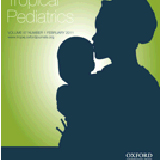
Background: Globally, the reduction of stillbirths is a high priority, especially in view of the targets set by the Millennium Development Goals. It is crucial that health policy-makers and programme managers are aware of the epidemiology of stillbirths. Objectives: This was a case–control study conducted in Kassala hospital in Eastern Sudan to investigate the prevalence and risk factors for stillbirth. Cases were women who delivered stillbirths; two consecutive women who delivered a live-born neonate per case were used as controls. Results: Among 1342 singleton deliveries, there were 44 stillbirths (33 per 1000 deliveries). Over half (54.5%) of these stillbirths were macerated stillbirths. While maternal socio-demographic characteristics were not associated with stillbirth, maternal anaemia was the main risk factor for stillbirth (Odds ratio = 8.4, 95% CI = 2.5–29.4; P = 0.001). Conclusion: Thus, greater focus on maternal nutrition and prevention of anaemia may prevent stillbirth in this setting.